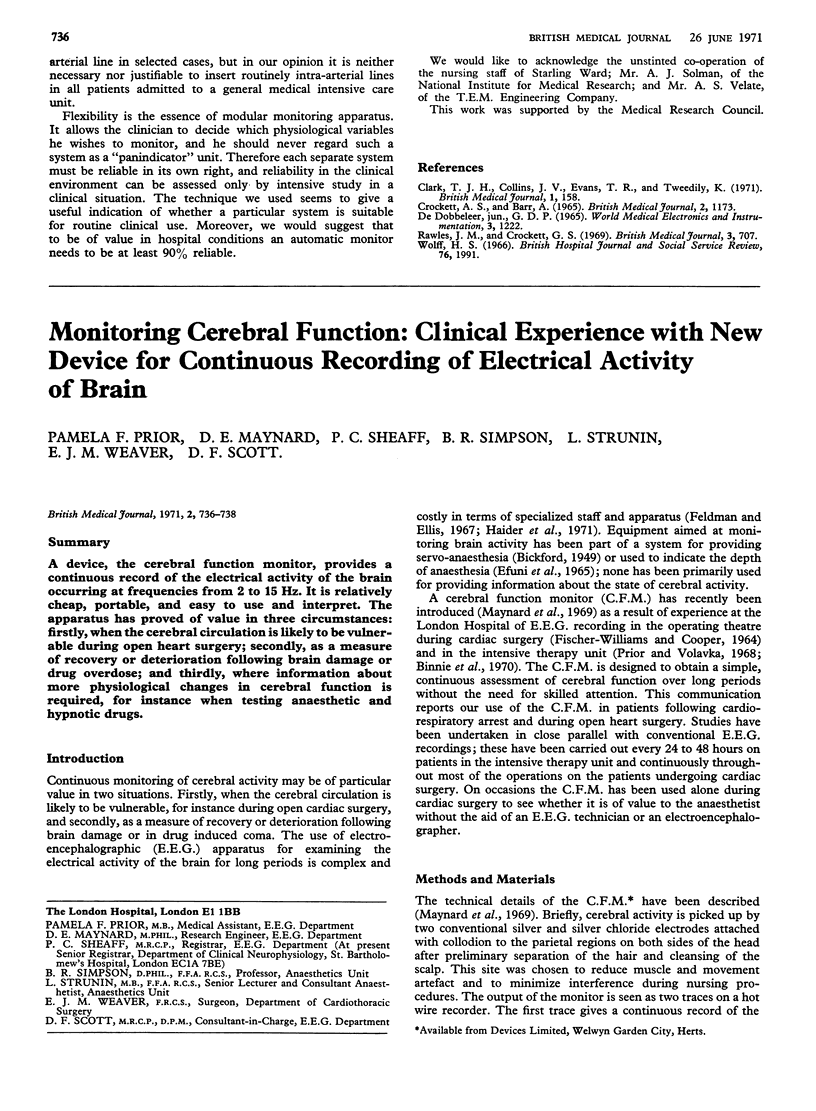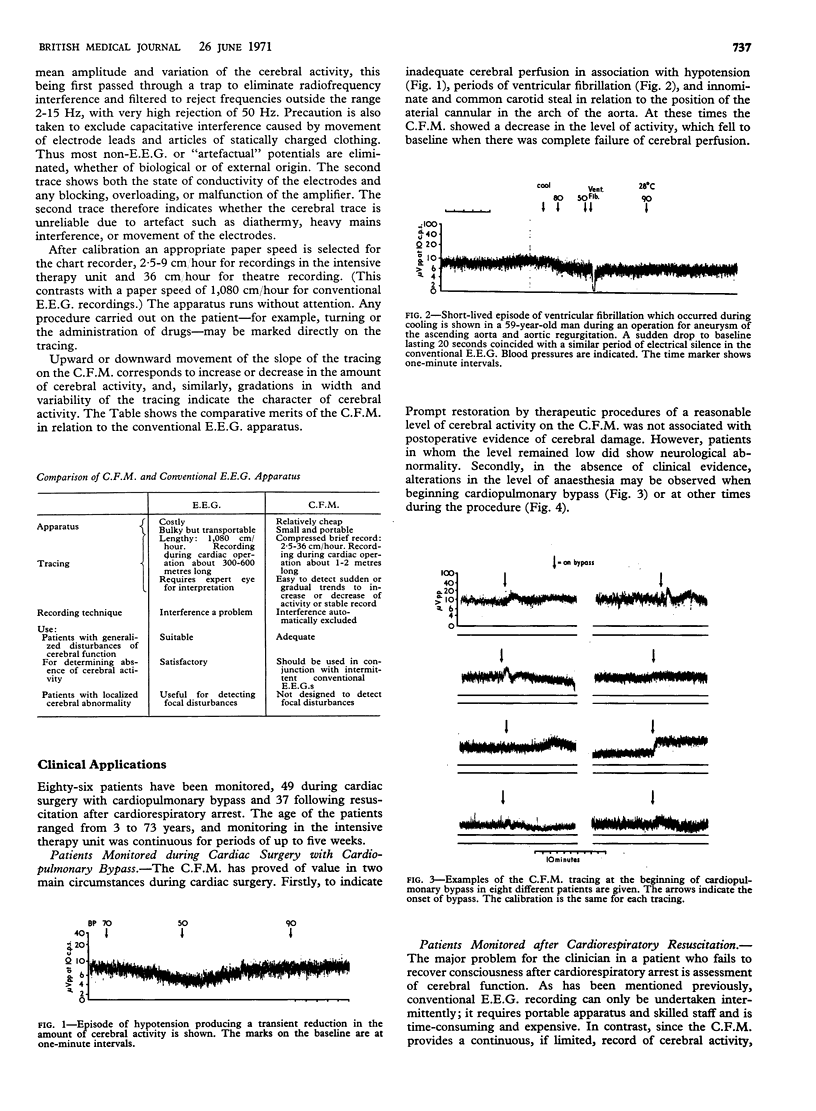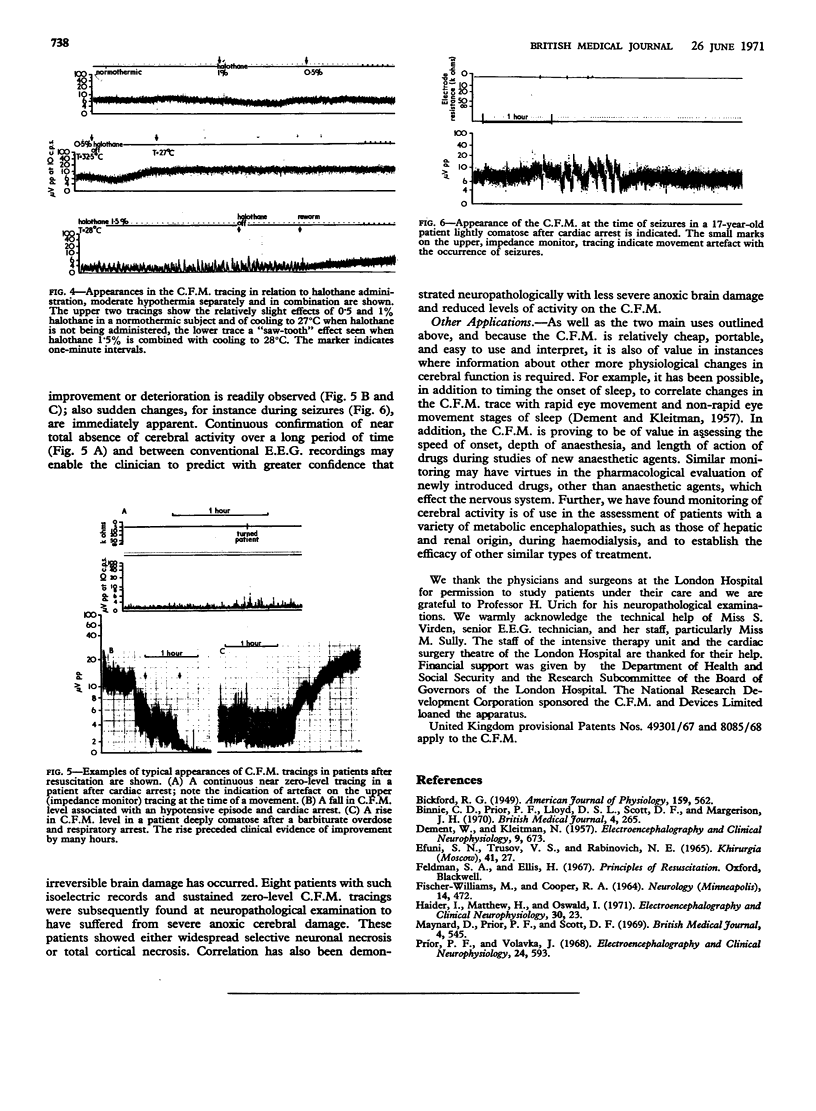Abstract
A device, the cerebral function monitor, provides a continuous record of the electrical activity of the brain occurring at frequencies from 2 to 15 Hz. It is relatively cheap, portable, and easy to use and interpret. The apparatus has proved of value in three circumstances: firstly, when the cerebral circulation is likely to be vulnerable during open heart surgery; secondly, as a measure of recovery or deterioration following brain damage or drug overdose; and thirdly, where information about more physiological changes in cerebral function is required, for instance when testing anaesthetic and hypnotic drugs.
Full text
PDF


Selected References
These references are in PubMed. This may not be the complete list of references from this article.
- Binnie C. D., Prior P. F., Lloyd D. S., Scott D. F., Margerison J. H. Electroencephalographic prediction of fatal anoxic brain damage after resuscitation from cardiac arrest. Br Med J. 1970 Oct 31;4(5730):265–268. doi: 10.1136/bmj.4.5730.265. [DOI] [PMC free article] [PubMed] [Google Scholar]
- DEMENT W., KLEITMAN N. Cyclic variations in EEG during sleep and their relation to eye movements, body motility, and dreaming. Electroencephalogr Clin Neurophysiol. 1957 Nov;9(4):673–690. doi: 10.1016/0013-4694(57)90088-3. [DOI] [PubMed] [Google Scholar]
- Efuni S. N., Trusov V. S., Rabinovich N. E. Primenenie strelochnogo indikatora s tsel'iu opredeleniia glubiny narkoza. Khirurgiia (Mosk) 1965 Dec;41(12):27–29. [PubMed] [Google Scholar]
- FISCHER-WILLIAMS M., COOPER R. A. SOME ASPECTS OF ELECTROENCEPHALOGRAPHIC CHANGES DURING OPEN-HEART SURGERY. Neurology. 1964 May;14:472–482. doi: 10.1212/wnl.14.5.472. [DOI] [PubMed] [Google Scholar]
- Haider I., Matthew H., Oswald I. Electroencephalographic changes in acute drug poisoning. Electroencephalogr Clin Neurophysiol. 1971 Jan;30(1):23–31. doi: 10.1016/0013-4694(71)90200-8. [DOI] [PubMed] [Google Scholar]
- Maynard D., Prior P. F., Scott D. F. Device for continuous monitoring of cerebral activity in resuscitated patients. Br Med J. 1969 Nov 29;4(5682):545–546. doi: 10.1136/bmj.4.5682.545-a. [DOI] [PMC free article] [PubMed] [Google Scholar]
- Prior P. F., Volavka J. An attempt to assess the prognostic value of the EEG after cardiac arrest. Electroencephalogr Clin Neurophysiol. 1968 Jun;24(6):593–593. [PubMed] [Google Scholar]


